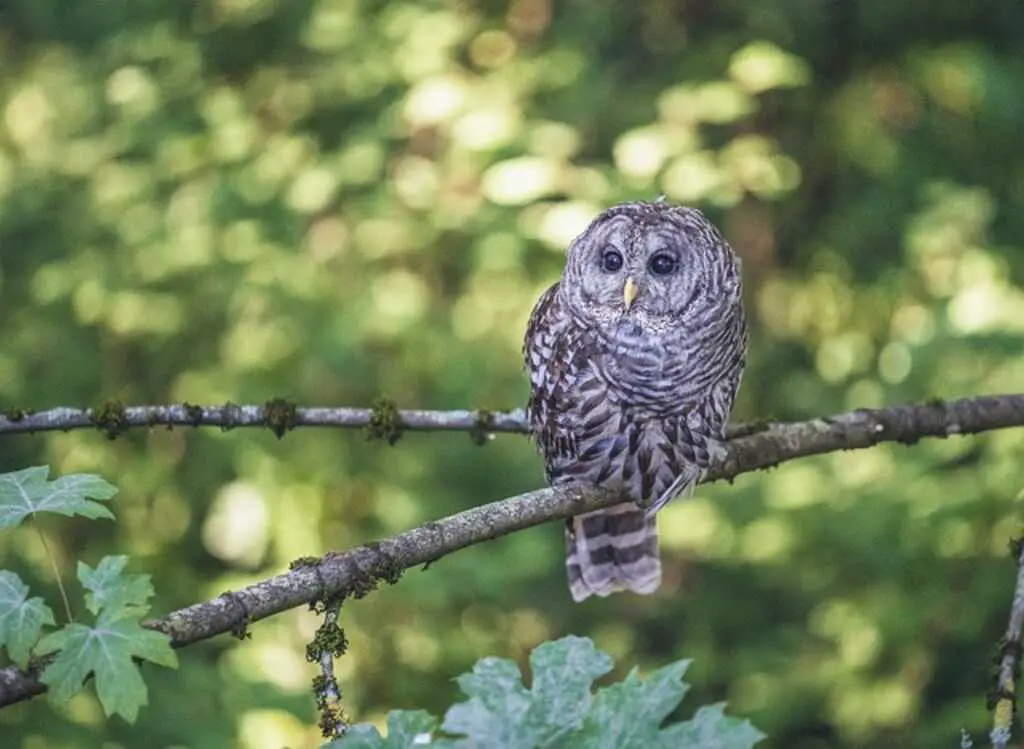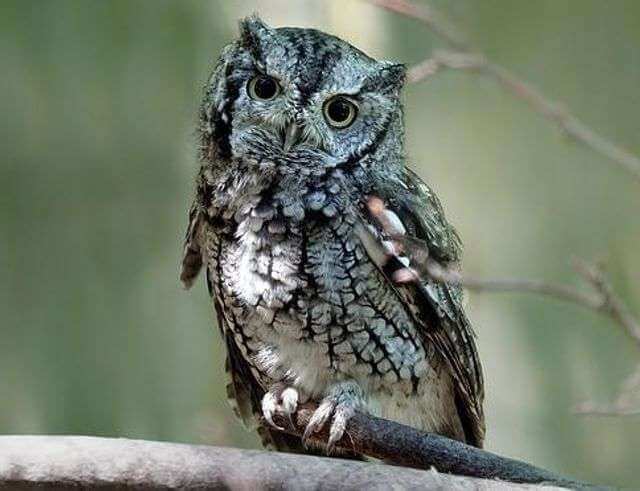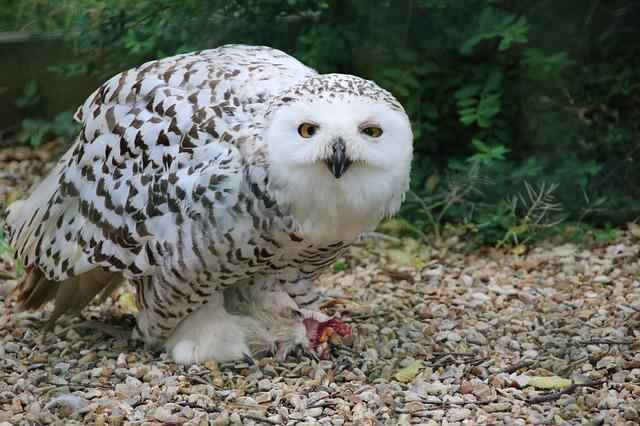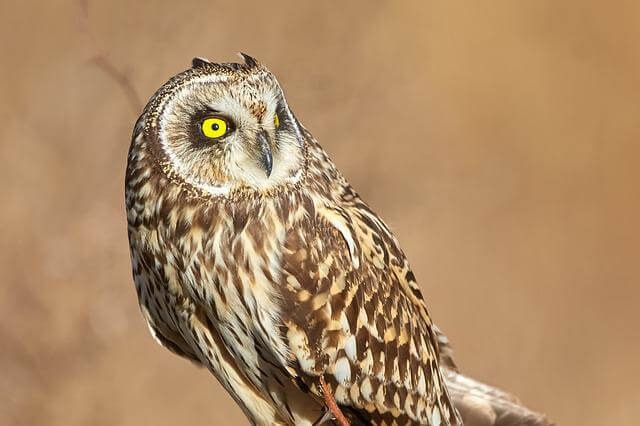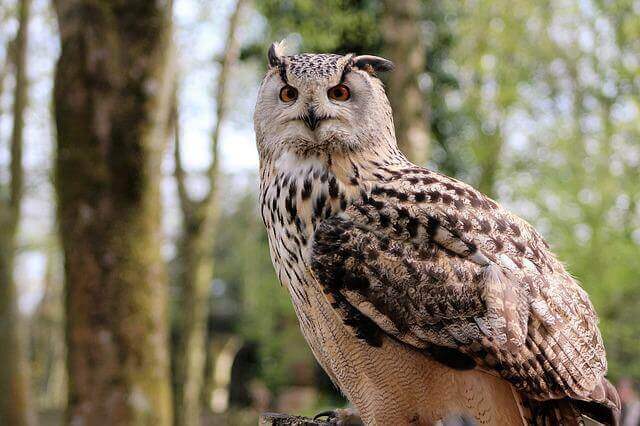Welcome to Massachusetts, where silent wings and piercing eyes define the realm of owls. From coastal marshes to deep forests, discover the 12 distinct owl species that grace this diverse landscape. Join us as we unravel their secrets, habitats, and the efforts dedicated to their conservation in this enchanting corner of New England.
Table of Contents
Types of Owls In Massachusetts
Barred Owl
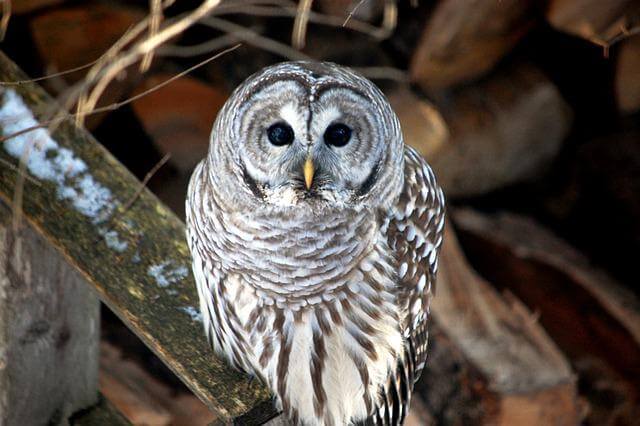
- Length: 16.9-19.7″ in (43-50 cm)
- Weight: 16.6-37.0 oz. (470-1050 g)
- Wingspan: 39.0-43.3″ in (99-110 cm)
- Scientific Name: Strix varia
- Frequency of Occurrence: 1.21% (Statistic by: eBird)
- Maps: Range Map – Sightings Map
- Sounds: Calls
- Where To Find Them: Barred Owls are a type of owl that can be found in many different locations throughout Massachusetts. Some of the most common places to find them include woods, forests, and marshes. However, they can also be found in more urban areas such as parks and gardens. Although they are not as common in cities, they can still be spotted on occasion. Barred Owls are most active at night, so this is the best time to look for them.
General Information: The beautiful barred owl is a bird of prey that can be found in woods and forests across North America. These owls are nocturnal hunters, so they are most often seen at night. Barred owls have large, round heads and dark eyes. Their name comes from the horizontal stripes on their chests, which look like bars.
These owls mostly eat small mammals, such as mice and voles. They will also eat birds, reptiles, and amphibians. Barred owls live in trees and make their nest in natural cavities. They usually mate for life and have between two to three chicks each year.
Great Horned Owl

- Length: 17.7-24.8 in (45-63 cm)
- Weight: 32.1-88.2 oz. (910-2500 g)
- Wingspan: 39.8-57.1 in (101-145 cm)
- Scientific Name: Bubo virginianus
- Frequency of Occurrence: 1.11%
- Maps: Range Map – Sightings Map
- Sounds: Calls
- Where To Find Them: The Great Horned Owl is a rare owl found in Massachusetts. They can be found in all counties except for Nantucket and Dukes Counties. The most common locations for them are in woodlands, near streams, and in open fields.
General Information: The Great Horned Owl is a large owl with a round head and prominent ear tufts. It has a large, powerful body and broad wings. The upperparts are grey-brown with white spots, while the underparts are white with brown streaks. The eyes are yellow-orange. The beak is black and the legs are feathered.
This owl is found in North and South America. It prefers woodlands, but can also be found in deserts, tundra, and even urban areas. Great Horned Owls hunt at night, using their excellent hearing to locate prey. They eat a variety of animals, including small mammals, reptiles, birds, and even fish.
Related: 35 Fun Facts About The Great Horned Owl (Detailed)
Eastern Screech Owl
- Length: 6.3-9.8″ in (16-25 cm)
- Weight: 4.3-8.6 oz. (121-244 g)
- Wingspan: 18.9-24.0″ in (48-61 cm)
- Scientific Name: Megascops asio
- Frequency of Occurrence: 0.7994%
- Maps: Range Map – Sightings Map
- Sounds: Calls
- Where To Find Them: The Eastern Screech Owl is a fairly rare bird, and can be found in many counties across Massachusetts. Some of the best spots to see the owl include the Quabbin Reservoir, Cape Cod, and the Berkshire Hills. The owl typically nests in trees, and can often be found near wooded areas or forests. The bird is mostly active at night.
General Information: The Eastern Screech Owl is a small, nocturnal owl found in North America. It is one of the most common owls in the eastern United States, where it is found in wooded areas. The owl gets its name from its call, which is a high-pitched trill. The Eastern Screech Owl has a large range, stretching from Canada to Central America. The owl prefers wooded habitats, but can also be found in urban areas.
It is a relatively small owl, with a length of about 8 inches. The plumage of the eastern screech owl varies depending on the geographical region, but is typically gray or brown with streaks of lighter colors.The diet of the eastern screech owl consists primarily of small mammals such as rodents and rabbits. The owl will also eat reptiles, birds, and insects.
Snowy Owl
- Length: 20.5-27.9 in (52-71 cm)
- Weight: 56.4-104.1 oz. (1600-2950 g)
- Wingspan: 49.6-57.1 in (126-145 cm)
- Scientific Name: Bubo scandiacus
- Frequency of Occurrence: 0.7836%
- Maps: Range Map – Sightings Map
- Sounds: Calls
- Where To Find Them: The Snowy Owl is a rare bird in Massachusetts. They can be found in the northern parts of the state, near the border with Canada. They are most often seen in the winter months, when they come down from the north to hunt for food.
General Information: The Snowy Owl (Bubo scandiacus) is a large, white owl of the typical owl family. Snowy owls live in the Arctic regions in North America and Eurasia. These birds are easy to identify due to their size and coloring. Adult males are almost all white, while females and young birds have more flecks of black feathers.
Snowy owls hunt during the day and night and eat a variety of small mammals and birds. They typically live in open tundra or taiga habitats. Snowy owls are one of the largest species of owl. They range in size from 19-28 inches tall with a wingspan of 4-6 feet wide. The females tend to be larger than the males on average.
Related: 48 Fun Facts About Snowy Owls (Full Guide with Photos!)
Short-eared Owl
- Length: 13.4-16.9 in (34-43 cm)
- Weight: 7.3-16.8 oz. (206-475 g)
- Wingspan: 33.5-40.5 in (85-103 cm)
- Scientific Name: Asio flammeus
- Frequency of Occurrence: 0.1945%
- Maps: Range Map – Sightings Map
- Sounds: Calls
- Where To Find Them: There are a few places where these magnificent creatures have been known to reside though, so if you’re lucky enough to spot one it’s sure to be a memorable experience. One such location is the town of Sandwich on Cape Cod. The owls can often be found near ponds and marshes in search of their favorite prey – small rodents. If you’re hoping to see a Short-eared Owl yourself, your best bet is to keep an eye out during the winter months.
General Information: The Short-eared Owl is a medium sized owl. It has a round head with tiny ear tufts. The facial disk is pale with dark concentric circles. The bill is black and the eyes are yellow. The upperparts are brown with white streaks and the underparts are white with brown streaks. The legs and feet are feathered. This owl ranges from Alaska to Labrador, and south to California, the Great Plains, and northern Mexico.
In winter, it is found in southern Canada, the northern United States, and Mexico. It prefers open habitats such as grasslands, marshes, meadows, prairies, and tundra. The Short-eared Owl hunts mostly at dawn and dusk. It feeds on small mammals such as mice, voles, lemmings, hares, and ground squirrels.
Northern Saw-whet Owl
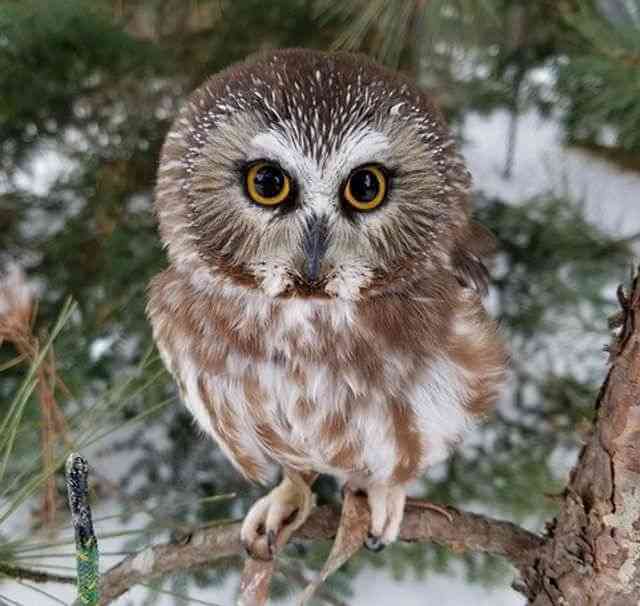
- Length: 7.1-8.3 in (18-21 cm)
- Weight: 2.3-5.3 oz. (65-151 g)
- Wingspan: 16.5-18.9 in (42-48 cm)
- Scientific Name: Aegolius acadicus
- Frequency of Occurrence: 0.1419%
- Maps: Range Map – Sightings Map
- Sounds: Calls
- Where To Find Them: The Northern Saw-whet Owl is a small owl that is found in North America. They are most commonly found in the forests of Canada and the northern United States. In Massachusetts, they can be found in the Berkshires and the Worcester Hills. They are also sometimes seen in the Boston area. These owls are relatively rare, so if you see one, it is a special treat.
General Information: The Northern Saw-whet Owl (Aegolius acadicus) is a small owl found in North America. It is one of the most widespread owls in the continent, and can be found in a variety of habitats, including forests, swamps, and even cities. The owl gets its name from its call, which sounds like a saw being sharpened on a whetstone.
The Northern Saw-whet Owl has a large range, stretching from Alaska and Canada all the way down to Mexico. The owl can be found in a variety of habitats within this range, including forests, swamps, and even cities. The diet of the Northern Saw-whet Owl consists mainly of rodents and other small mammals, although the owl will also eat birds and insects on occasion.
Related: What is the Smallest Owl in North America? (A Full Guide)
Long-eared Owl
- Length: 13.8-15.8 in (35-40 cm)
- Weight: 7.8-15.3 oz. (220-435 g)
- Wingspan: 35.4-39.4 in (90-100 cm)
- Scientific Name: Asio otus
- Frequency of Occurrence: 0.0476%
- Maps: Range Map – Sightings Map
- Sounds: Calls
- Where To Find Them: One of the best places to find long-eared owls is in the Cape Cod National Seashore. These owls hunt for small rodents and other animals in the dunes and marshes around the seashore. If you’re lucky, you might spot one of these owls perched atop a sand dune, waiting to swoop down on its next meal. Another good place to see long-eared owls is at the Mass Audubon’s Boston Nature Center & Wildlife Sanctuary. These owls live in the woodlands around the center, and can often be seen hunting for food in the early morning or evening hours.
General Information: If you’re out for a walk in the woods and you see a long-eared owl, you’re in for a treat. These owls are some of the most interesting and beautiful bird species around. Here’s what you should know about them: The long-eared owl has a very large range, spanning much of Europe, Asia, and North America. In fact, it’s one of the most widespread owl species in the world.
This owl prefers to live in forests, but can also be found in other habitats like grasslands and even deserts.The long-eared owl has a varied diet that includes small mammals, reptiles, birds, and insects. But its favorite food is voles – small rodents that make up a large part of its diet.
Barn Owl
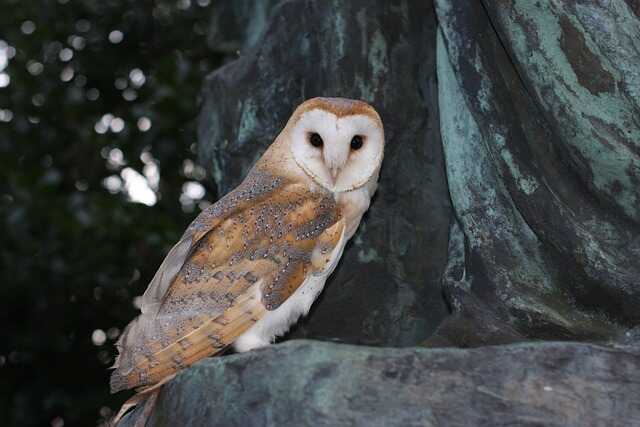
- Length: 12.6-15.8″ in (32-40 cm)
- Weight: 14.1-24.7 oz. (400-700 g)
- Wingspan: 39.4-49.2″ in (100-125 cm)
- Scientific Name: Tyto alba
- Frequency of Occurrence: 0.0314%
- Maps: Range Map – Sightings Map
- Sounds: Calls
- Where To Find Them: The barn owl is a species of owl that can be found in many locations around the world. However, they are quite rare in Massachusetts. There are only a few spots where they have been known to reside. One of these spots is the Quabbin Reservoir. Another is the Concord River. Finally, they have also been spotted in the Boston area. While their numbers are small, there is still a chance to see one of these magnificent creatures if you know where to look!
General Information: The barn owl is a medium to large sized owl with a typical length of 32 to 40 cm. The wingspan can range from 100 to 125 cm. They have a white or pale grey face with dark brown eyes. The upperparts are usually brown or grey with darker streaks. The underparts are white with some dark streaks. The feet and legs are covered in feathers. The barn owl is found in open country habitats such as fields, meadows, marshes and prairies.
They prefer areas with few trees and dense vegetation. The barn owl has a cosmopolitan distribution and is found on every continent except Antarctica. The diet of the barn owl consists mainly of small mammals such as mice, rats and voles. They will also eat birds, reptiles, amphibians and invertebrates. Barn owls hunt at night using their excellent hearing to locate their prey.
Boreal Owl
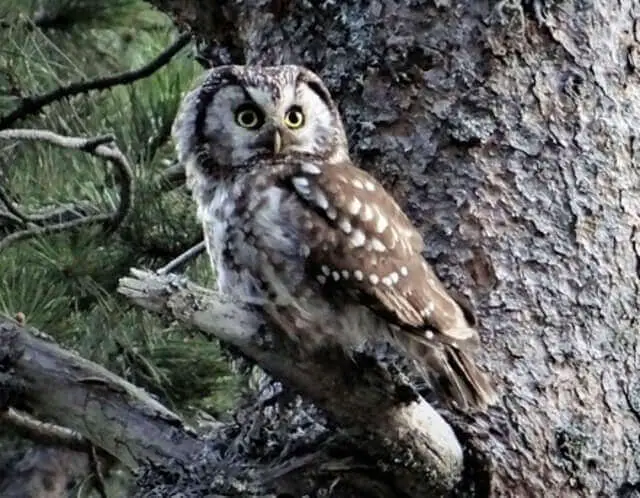
- Length: 8.3-11.0 in (21-28 cm)
- Weight: 3.3-7.6 oz (93-215 g)
- Wingspan: 21.6-24.4 in (55-62 cm)
- Scientific Name: Aegolius funereus
- Frequency of Occurrence: 0.0016%
- Maps: Range Map – Sightings Map
- Sounds: Calls
- Where To Find Them: The Boreal Owl is a very rare bird that is only found in a few locations in Massachusetts. They are most commonly found in the northern parts of the state, near the border with Canada.
General Information: The Boreal Owl is a medium-sized owl that is found in North America, Europe, and Asia. It gets its name from the fact that it is often found in boreal forests. The Boreal Owl has a round head with no ear tufts, and its eyes are yellow. It has a brown body with white spots, and its wings are long and narrow. The Boreal Owl typically weighs between 3.0 and 7.5 ounces. The Boreal Owl’s range extends from Alaska and Canada south to the mountains of California and New Mexico.
In the east, its range includes most of Canada and the northern United States. The Boreal Owl can also be found in parts of Europe and Asia. The Boreal Owl inhabits dense forests with lots of trees for perching and nesting. They hunt small mammals such as mice and voles, which they locate by listening for their movements through the snow. Boreal Owls will also take advantage of other food sources, such as birds and insects.
Great Gray Owl
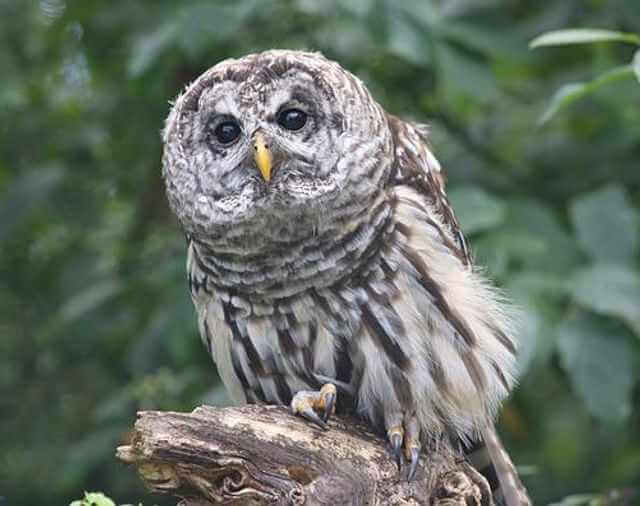
- Length: 24.0-33.0 in (61-84 cm)
- Weight: 24.7-60.0 oz. (700-1700 g)
- Wingspan: 53.9-60.2 in (137-153 cm)
- Scientific Name: Strix nebulosa
- Frequency of Occurrence: 0.0011%
- Maps: Range Map – Sightings Map
- Sounds: Calls
- Where To Find Them: The Great Gray Owl is one of the rarest owls in North America. They are found in the boreal forests of Canada and the northern United States. In Massachusetts, they are found in the Berkshire Mountains and the Cape Cod National Seashore.
General Information: The Great Gray Owl (Strix nebulosa) is a large owl of the true owl family. Strigidae. Its range includes much of North America, from Alaska and Canada to as far south as northern California and the Rocky Mountains in the United States. The Great Gray Owl is roughly the size of a great horned owl, but with longer wings and tail. It has very long ear tufts, which are often longer than its head appears wide.
The underparts are light with heavy streaks, while the upperparts are grayish brown with white streaks. There is a dark “bow tie” across the chest. The facial disc is pale grayish with a black border, and there is a white “eyebrow” above each yellow eye. Sexes are similar in appearance, although females may be slightly smaller than males on average.
Related: 53 Fun Facts About The Great Gray Owl (Photos, ID & Info)
Burrowing Owl
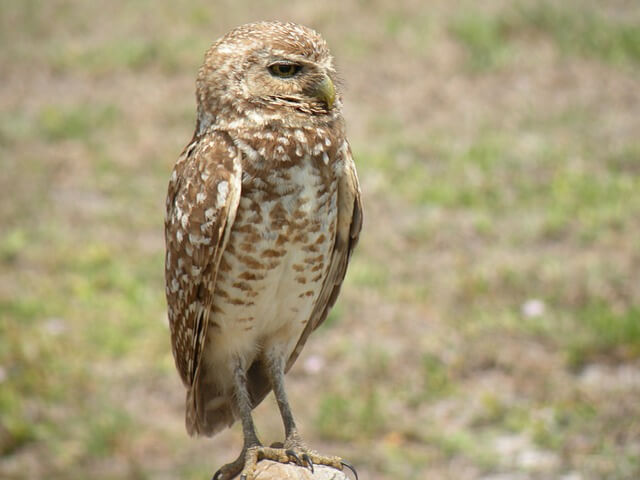
- Length: 7.5-9.8″ in (19-25 cm)
- Weight: 5.3 oz. (150 g)
- Wingspan: 21.6″ in (55 cm)
- Scientific Name: Athene cunicularia
- Frequency of Occurrence: 0.0001%
- Maps: Range Map – Sightings Map
- Sounds: Calls
- Where To Find Them: Burrowing owls are very rare, and they are only found in a few locations in Massachusetts. They are most commonly found in the Cape Cod area, but they have also been spotted in the Berkshires and on Martha’s Vineyard. These owls are very shy and elusive, so it is hard to get a good look at them. But if you’re lucky enough to see one, you’re sure to be amazed by their beauty.
General Information: The burrowing owl (Athene cunicularia) is a small, long-legged owl found throughout North and South America. Burrowing owls can be found in a variety of habitats, including grasslands, deserts, and even urban areas. These owls get their name from their habit of nesting in burrows, which they often excavate themselves. Burrowing owls are relatively small owls, measuring about 10 inches in length and weighing just over 5 ounces.
They have pale brown plumage with white spots and streaks, and long legs that are covered in feathers all the way to the toes. These owls have relatively large eyes that are well-suited for hunting at night. Burrowing owls primarily eat insects, although they will also consume small mammals, reptiles, and birds.
Related: Really Cool Burrowing Owl Facts That Will Amaze You!
Northern Hawk Owl
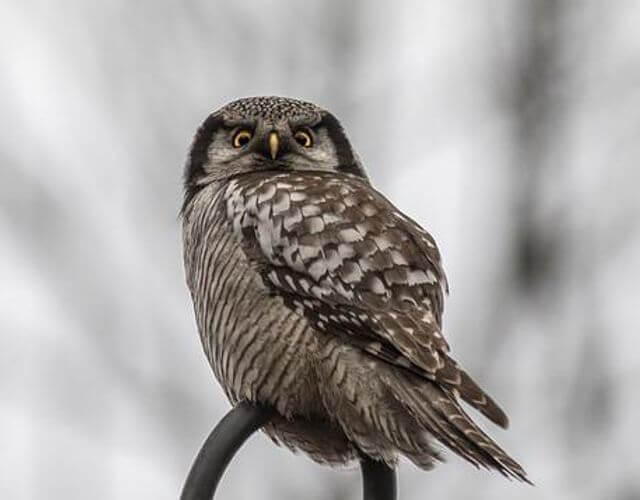
- Length: 14.2-17.7 in (36-45 cm)
- Weight: 8.5-16.0 oz. (240-454 g)
- Wingspan: 27.9 in (71 cm)
- Scientific Name: Surnia ulula
- Frequency of Occurrence: 0.0001%
- Maps: Range Map – Sightings Map
- Sounds: Calls
- Where To Find Them: The Northern Hawk Owl is found in open woodlands, boreal forests, and tundra habitats. In Massachusetts, it is most likely to be seen in the northern part of the state near the Canadian border.
General Information: The Northern Hawk Owl is a small to medium-sized owl. It has a large head with bright yellow eyes and a white facial disk with black streaks. The upperparts are gray with brown streaks and the underparts are white with brown streaks. The wings are long and rounded. The tail is short and square. The feet are feathered.
This owl inhabits boreal forests in North America. It is found in Alaska, Canada, and the northern United States. It prefers open forests with some trees for perching. Furthermore, it will also use human-made structures such as power lines and buildings for perching. This owl eats small mammals such as voles, mice, shrews, lemmings, hares, squirrels, weasels, and moles. Birds are also occasionally eaten.
Related Posts:

